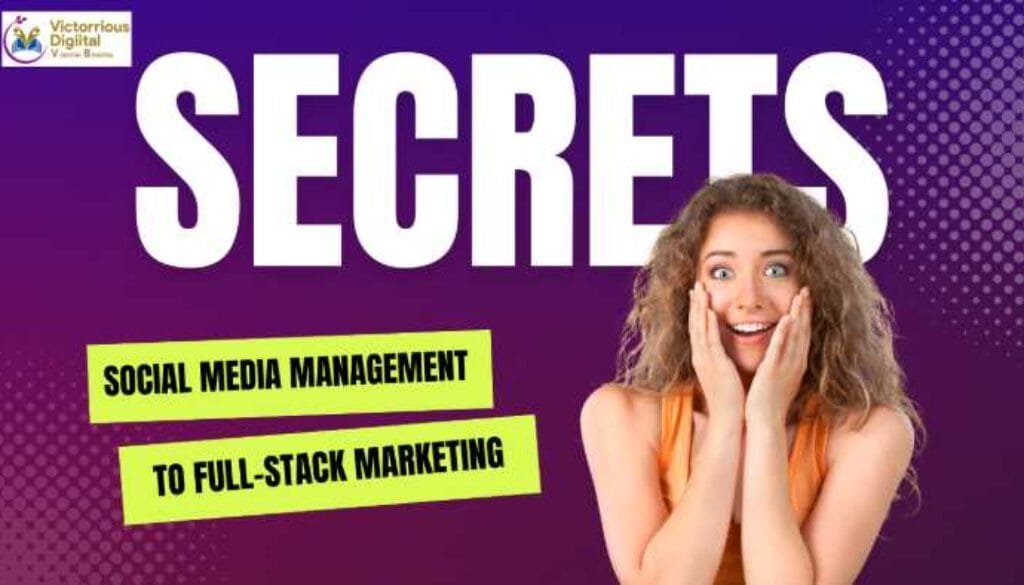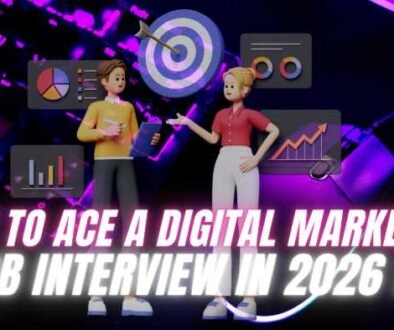From Social Media Management to Full Stack Marketing
Gone are the days when the physical world of marketing was one-dimensional or one skill-based. People used to work with a Facebook, Instagram, or LinkedIn page for a brand, and the Internet would run from there. Now, however, Presidents (or CFOs) expect marketers to track their arms around the whole funnel — all the way from awareness to leads and from leads to sales.
For individuals who are Social Media Managers and want to level up, this story will show you how to easily transition into becoming not only a Social Media Manager but also a Full-Stack Marketer (someone who knows all aspects of Digital Marketing).
Table of Contents
What Is a Full-Stack Marketer?
A Full-Stack Marketer is someone who has experience in both traditional and digital marketing channels with familiarity in areas such as strategy, content creation, analytics , and advertising.
They do not just share, they strategise, plan, measure, and optimise campaigns across dozens of channels, such as:
- SEO (Search Engine Optimization)
- Paid Ads (Google Ads, Meta ads (previously Facebook ads), and so on)
- Email Marketing
- Content Marketing
- Marketing Automation
- Analytics & Conversion Tracking
A full-stack marketer comprehends how the entire digital marketing ecosystem works together — not just social media, in other words.
Why Go Beyond Simple Social Media Management?
Social media is a valuable marketing tool, but that is only part of the overall puzzle. This is why you should do so:
More Career Opportunities:
You can imagine how big the demand for full-stack marketers is. Companies prefer to hire one individual who understands the full marketing cycle over hiring a bunch of people for each little task.
Better Salary & Growth:
The more skills you have, the bigger you can play, and/or the higher you can charge if freelance or a consultant.
Stronger Marketing Strategy:
When you understand all the elements of marketing you connect the outcomes of your social media activity to website traffic into leads and sales so that your campaigns perform even better.
You Become Future-Ready:
Marketing trends keep changing. Because full-stack marketing is your career insurance policy.
Guidebook to nurturing and finding success for a Startup — from social media to Full-Stack Marketing
Hence, we will take it step by step so that you can shift it easily.
Step 1: Understand the usage of digital marketing in each and every way.
You should know:
What makes a Website what it is (flowers of WordPress or site builders)
SEO refers to search engine optimization, which is a technique that most websites need to practice to rank.
5 Ways small and large businesses can attract customers through paid ads (eg, Google Ads or Meta Ads)
Using landing pages to generate leads
How emails nurture those leads
How an analytics platform reaches that information
When you have the big picture, you can see how social media fits in and how to integrate it with other channels.
Step 2: Full-Stack Marketing Core Areas Full-Stack Marketing Core Areas
I’m not going to bore you with the full manual, so here are the biggest components you need to know about, one by one:
Search Engine Optimization (SEO):
You will also learn how to look for keywords and write SEO friendly copy.
Understand on-page and off-page optimization.
Utilize Google Search Console, SEMrush.
Paid Advertising (PPC):
Experience working with Google Ads and Meta Ads (Facebook & Instagram).
Learn how to run campaigns, budget, target , and measure results
Email Marketing & Automation:
Excel on tools such as Mailchimp, HubSpot , or ActiveCampaign.
Write Emails That Get Results, and Set Up a Few Automation Workflows
Content Marketing:
Learn how to write blogs, videos, and posts that drive business
Focus more on writing stories and content that can help you with SEO.
Analytics & Data Tracking:
Discover how to track user engagement through Google Analytics, the Meta Pixel, and UTM links.
Learn how to calculate ROI.
Basic Website & Landing Page Skills:
Learn WordPress, Canva, or landing page creation tools like Unbounce or Elementor on your own.
Funnel Mastery — Understand how a funnel works from ad to landing page to conversion
STEP 3: Connect Social Media with the Full Funnel
Learn how to apply the skills and knowledge you have about social media as you learn – start with the context of the whole marketing funnel.
For example:
Step 1: Channel traffic to a landing page using Facebook or Instagram Ads.
Capture leads using a form.
Send automated email follow-ups.
Track conversions using Google Analytics.
And that is how you will start to recognize where social media slots into the overall marketing landscape.
Step 4: Build Hands-On Experience
This is useful to know, but nothing to use.
Here is how you can gain some real-world experience:
Create your own blog or small project.
Conduct small cost cost-effective ad campaigns
Offer businesses free travel-related goods and services or at a Reduced Price.
Work as an intern or freelance for a digital marketing agency.
You will gain practical exposure to how do campaign works from end to end by taking these little projects.
familiarize with marketing strategy and planning
A whole marketer, not a mere executor. A full-stack marketer is not someone who simply “gets it done.
Learn how to:
The marketing plan is for a product or service.
Identify the target audience and their customer journey:
Know which objectives to use on each platform — awareness, leads, and sales.
Track and define KPIs (Key Performance Indicators)
This type of strategy is what will set you apart from the average social media manager.
Stage 5: Use Full-Stack Marketer Tools
You should know all of them at least — even if you are not a master of each kind.
Here are some must-know tools:
- Area
- Tools
- Social Media
- Meta Business Suite, Buffer, Hootsuite
- SEO
- Google Search Console, Ahrefs, SEMrush
- Email Marketing
- Mailchimp, HubSpot, ActiveCampaign
- Paid Ads
- Action In The Ads Networks Google Ads Meta Ads LinkedIn Adverts
- Analytics
- Google Analytics, Tag Manager, Hotjar
- Design
- Canva, Figma, Adobe Express
Step 6: Create A Personal Brand
And once you’ve got more skills, start writing about it online.
Share your experience on LinkedIn.
Make them Instagram or YouTube case studies or mini-tutorials
Display portfolio, results, and certifications.
Having a strong brand allows you to attract higher-level job offers or freelance work.
Get Quality courses and Certifications
Combine a training or certificate, and you will speed up the transition process.
Some good platforms are:
Google Digital Garage — free marketing courses
HubSpot Academy – for inbound and content marketing
Meta Blueprint — for a professional ad on Social Media
Victorious Digital Pune – for a complete digital marketing course (offline + online).
A certification brings credibility and ensures that you are learning in an organized format.
Step 7: Build a Portfolio
Record all knowledge you gain, and all actions you take.
Include:
- Campaign Results (pre & post stats)
- Creative examples
- Case studies
- Testimonials
If you are looking for your first job or freelance gig as a full-stack marketer, a decent portfolio will help you get your job as a full-stack marketer.
Learn even more by expressing your creativity with these 10 simple experiments
Digital marketing keeps evolving. The algorithms, tools, and user behaviour are constantly changing.
To stay ahead, keep experimenting:
Try new ad formats.
A/B test landing page versions.
Stay on top of the newest Google or Meta updates.
Participate in marketing communities & follow the professionals.
The tip of success is to learn continuously throughout your life.
Read Also: Top 10 Skills Every Digital Marketing Professional Should Master




